
cd_nom
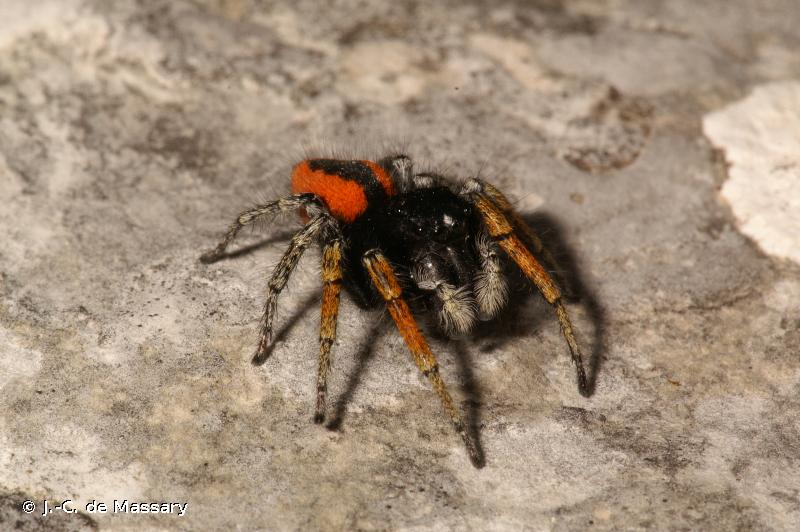
| Author : J.-C. de Massary |
 |
To get the picture, please visit:
Massary (de)Jean-Christophe
25 rue des Sorbiers
60510 LA NEUVILLE EN HEZ
Legend: Mâle
Despite the Creative Commons license, please inform the author of the use which will be made of his photo
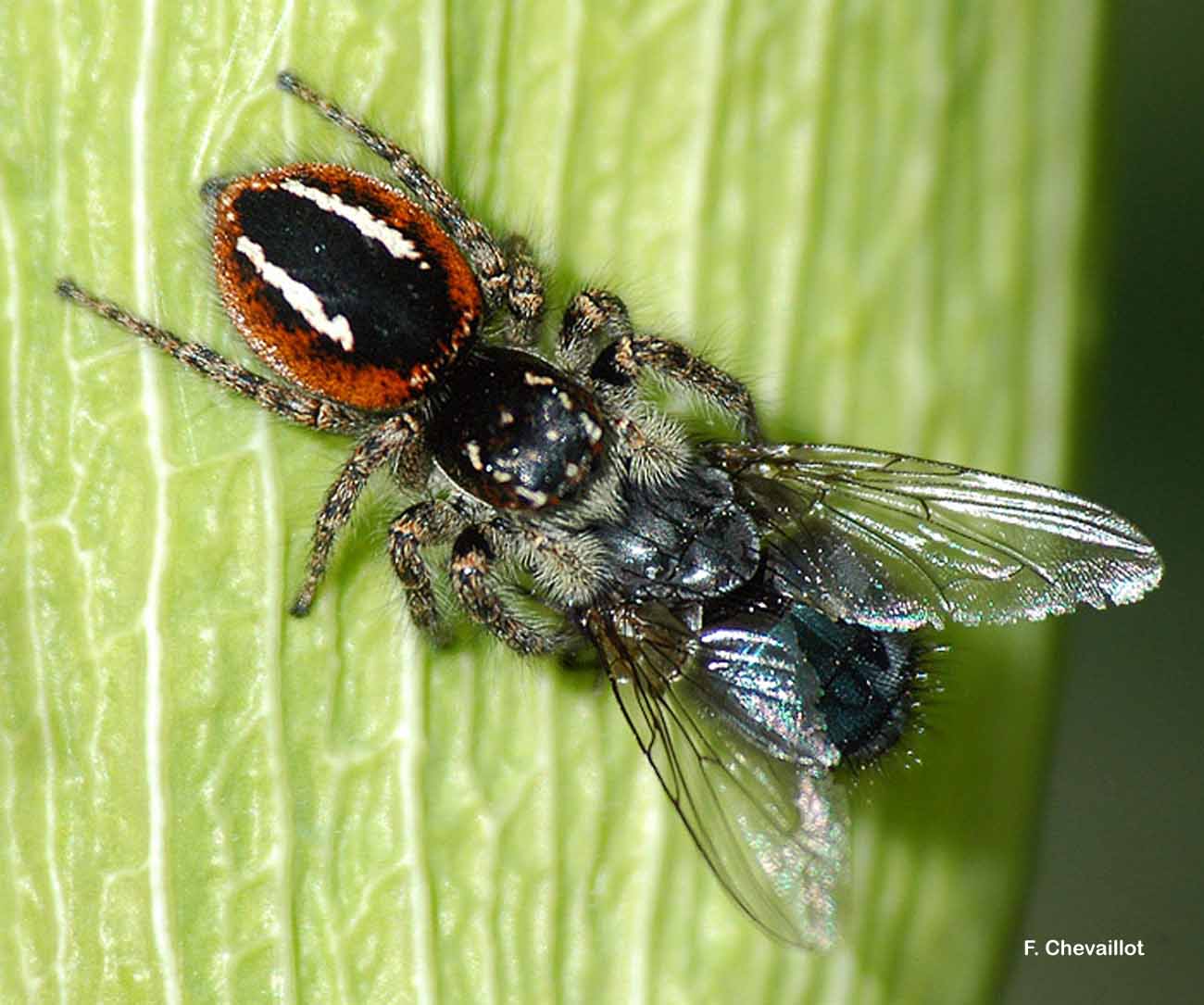
| Author : F. Chevaillot |
 |
To get the picture, please visit:
Fred CHEVAILLOT
Moulin de Castor
La Maynobe
12550 COUPIAC
06 51 19 18 32
09 88 28 31 26
www.insecte.org
email : fred.chevaillot@wanadoo.fr
Any reuse of one or more photographs on this site is subject to an authorization request from the author.
Link to the Code of Intellectual Property (Legifrance)
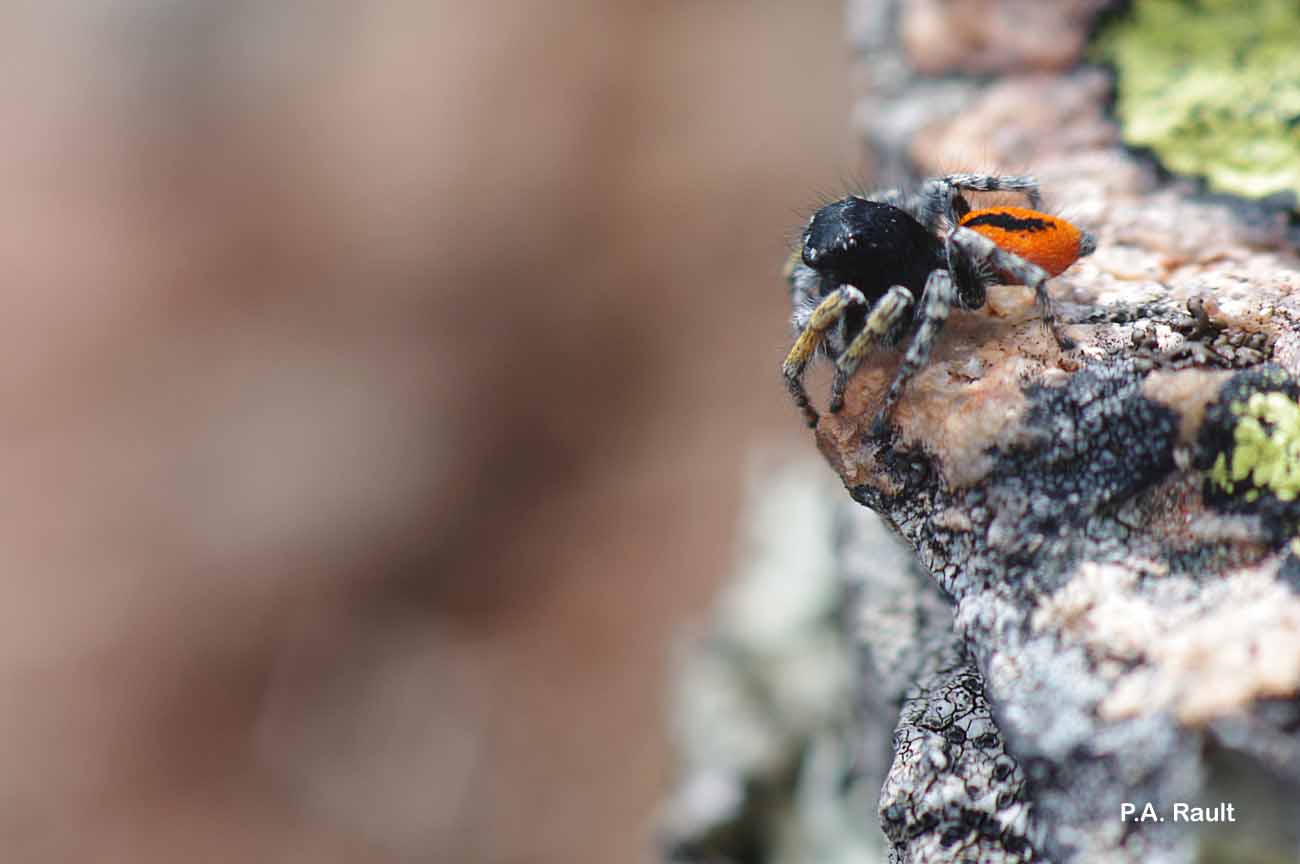
| Author : P.A. Rault |
 |
To get the picture, please visit:
Pierre Alexis RAULT
Muséum national d'Histoire naturelle - Service du Patrimoine Naturel
4 avenue du petit château
91 800 BRUNOY
e-mail : parault@mnhn.fr
Legend: Mâle - Domaine de Bouis (FEGVE)
Any reuse of one or more photographs on this site is subject to an authorization request from the author.
Link to the Code of Intellectual Property (Legifrance)
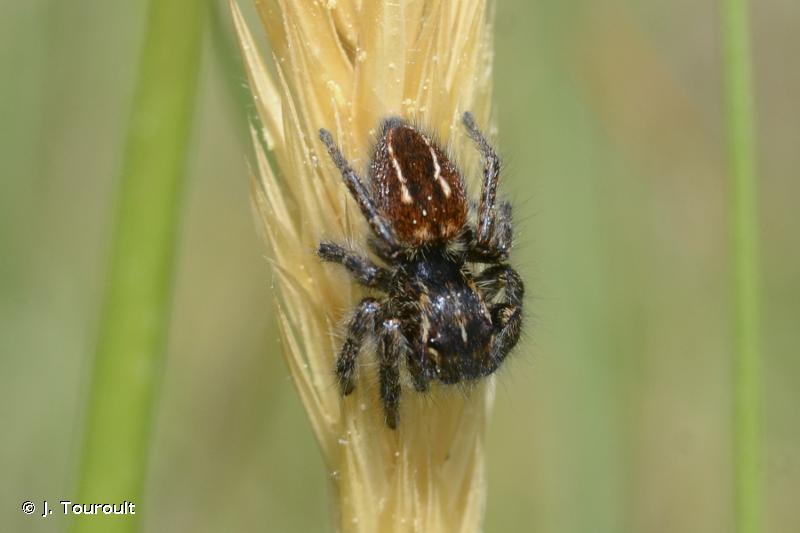
| Author : J. Touroult |
 |
To get the picture, please visit:
Legend: Immature
Despite the Creative Commons license, please inform the author of the use which will be made of his photo
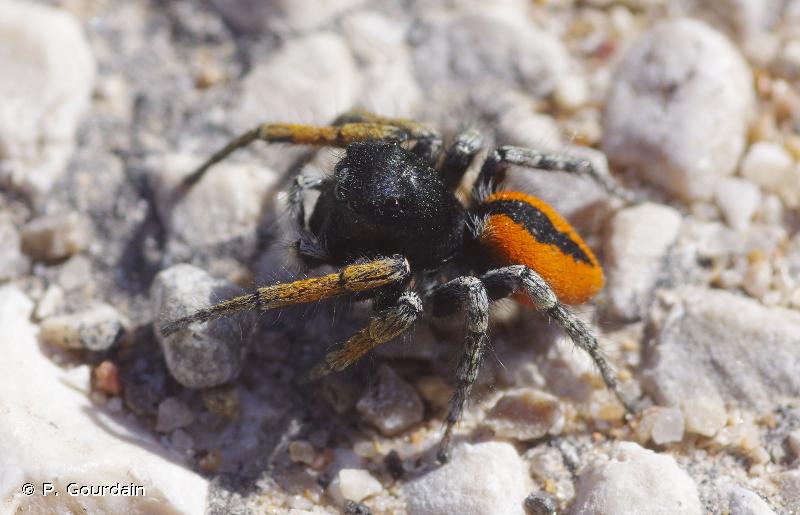
| Author : P. Gourdain |
 |
To get the picture, please visit:
Despite the Creative Commons license, please inform the author of the use which will be made of his photo
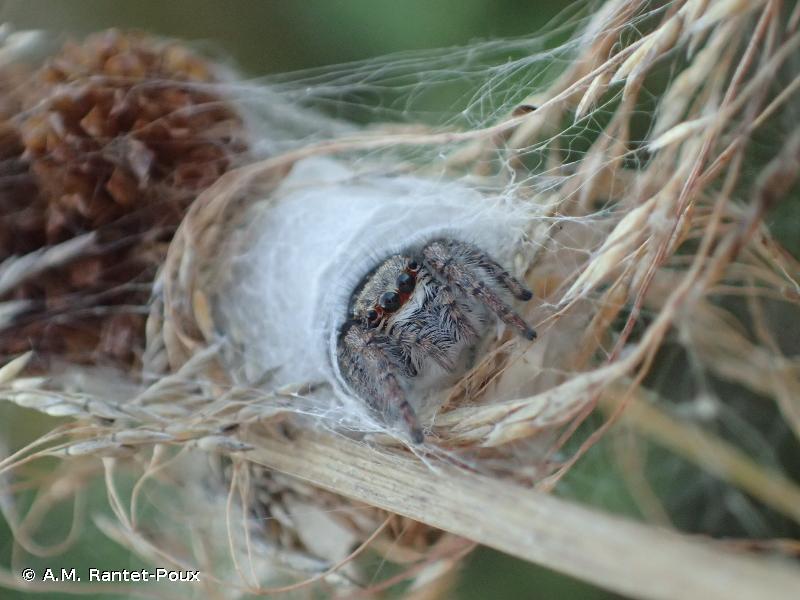
| Author : A.M. Rantet-Poux |
 |
To get the picture, please visit:
Anne-Marie Rantet-Poux
Association française d'arachnologie (AsFra)
email: inpn@mnhn.fr
Despite the Creative Commons license, please inform the author of the use which will be made of his photo
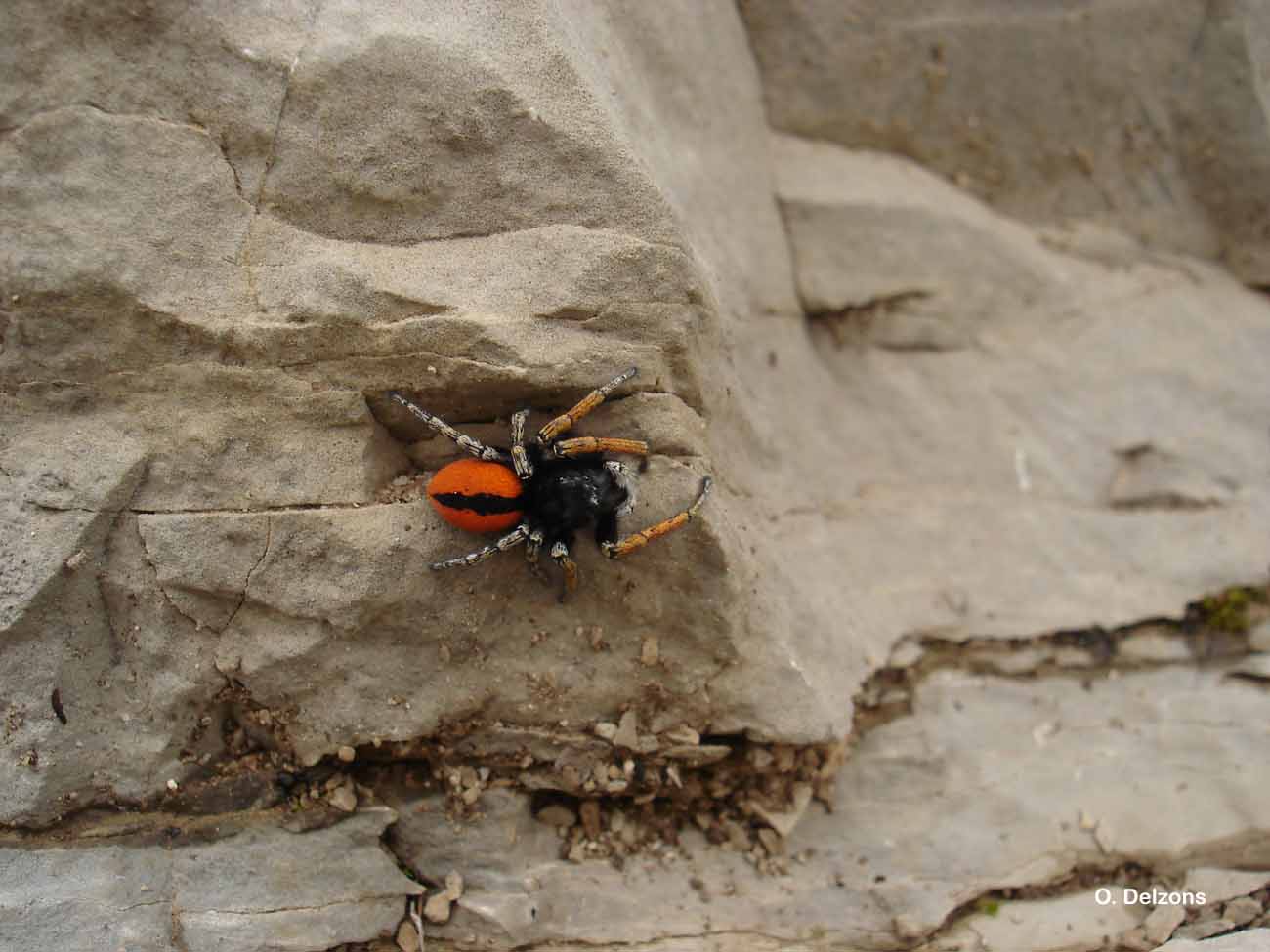
| Author : O. Delzons |
 |
To get the picture, please visit:
Olivier DELZONS
Muséum national d'Histoire naturelle - Service du Patrimoine Naturel
36 rue Geoffroy Saint-Hilaire
CP 41
75 231 PARIS CEDEX 05
e-mail : delzons@mnhn.fr
Despite the Creative Commons license, please inform the author of the use which will be made of his photo
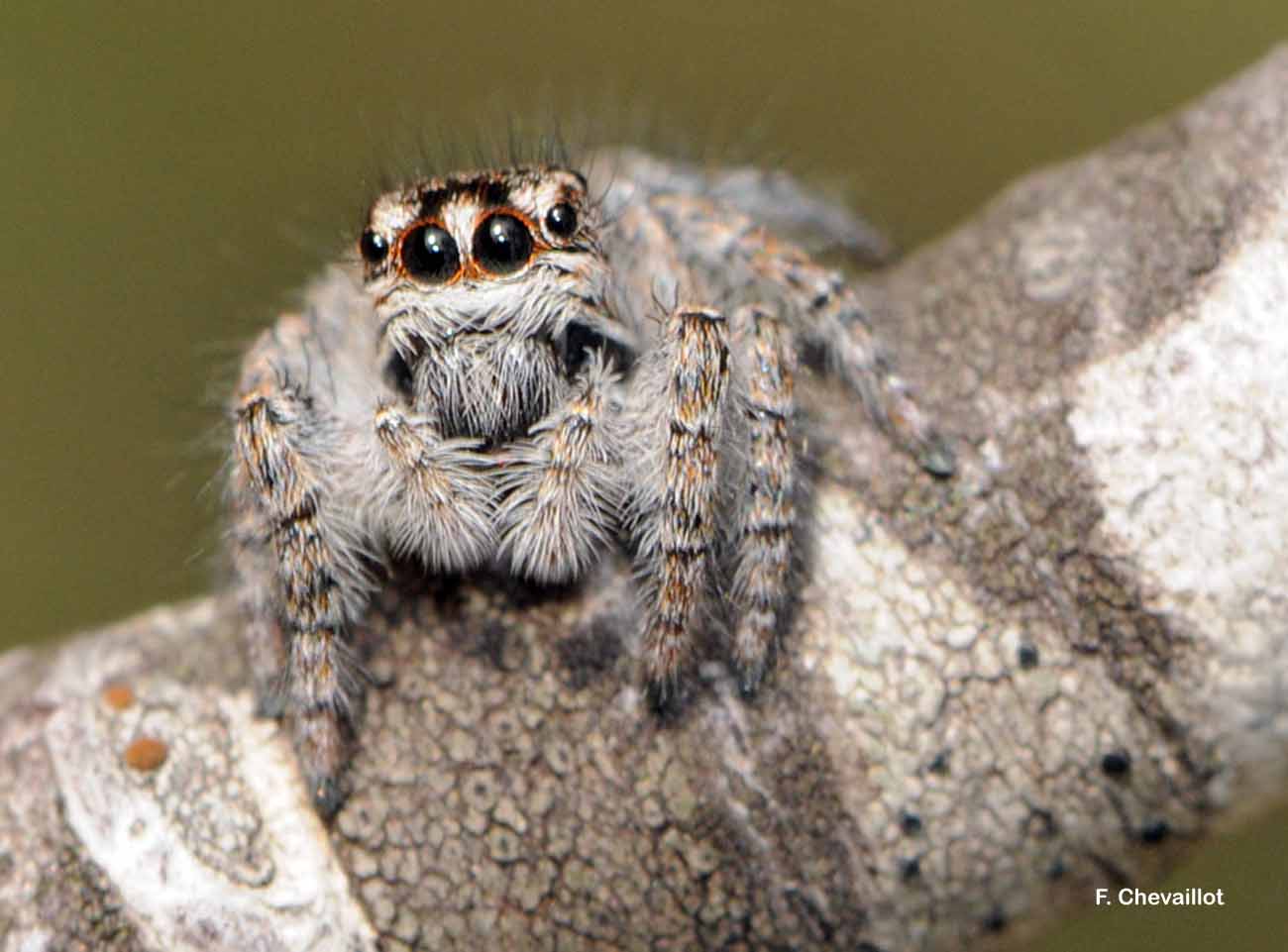
| Author : F. Chevaillot |
 |
To get the picture, please visit:
Fred CHEVAILLOT
Moulin de Castor
La Maynobe
12550 COUPIAC
06 51 19 18 32
09 88 28 31 26
www.insecte.org
email : fred.chevaillot@wanadoo.fr
Any reuse of one or more photographs on this site is subject to an authorization request from the author.
Link to the Code of Intellectual Property (Legifrance)
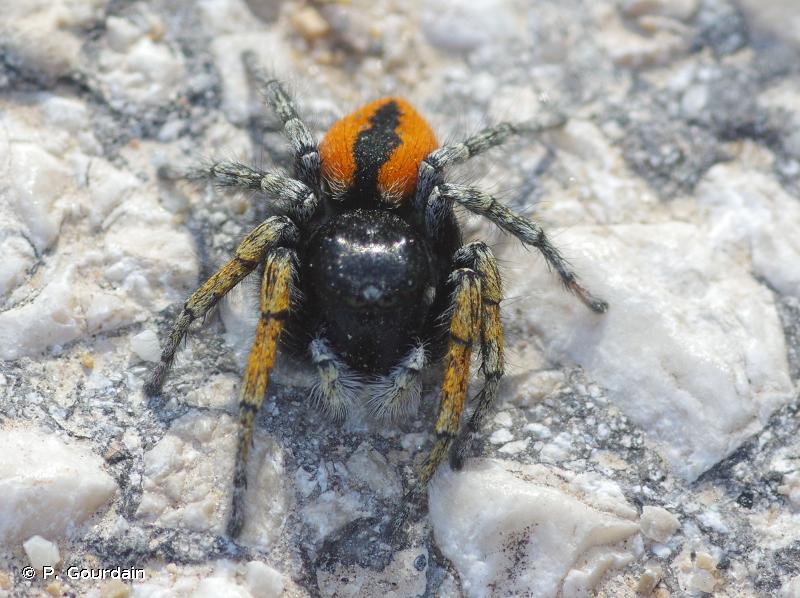
| Author : P. Gourdain |
 |
To get the picture, please visit:
Despite the Creative Commons license, please inform the author of the use which will be made of his photo
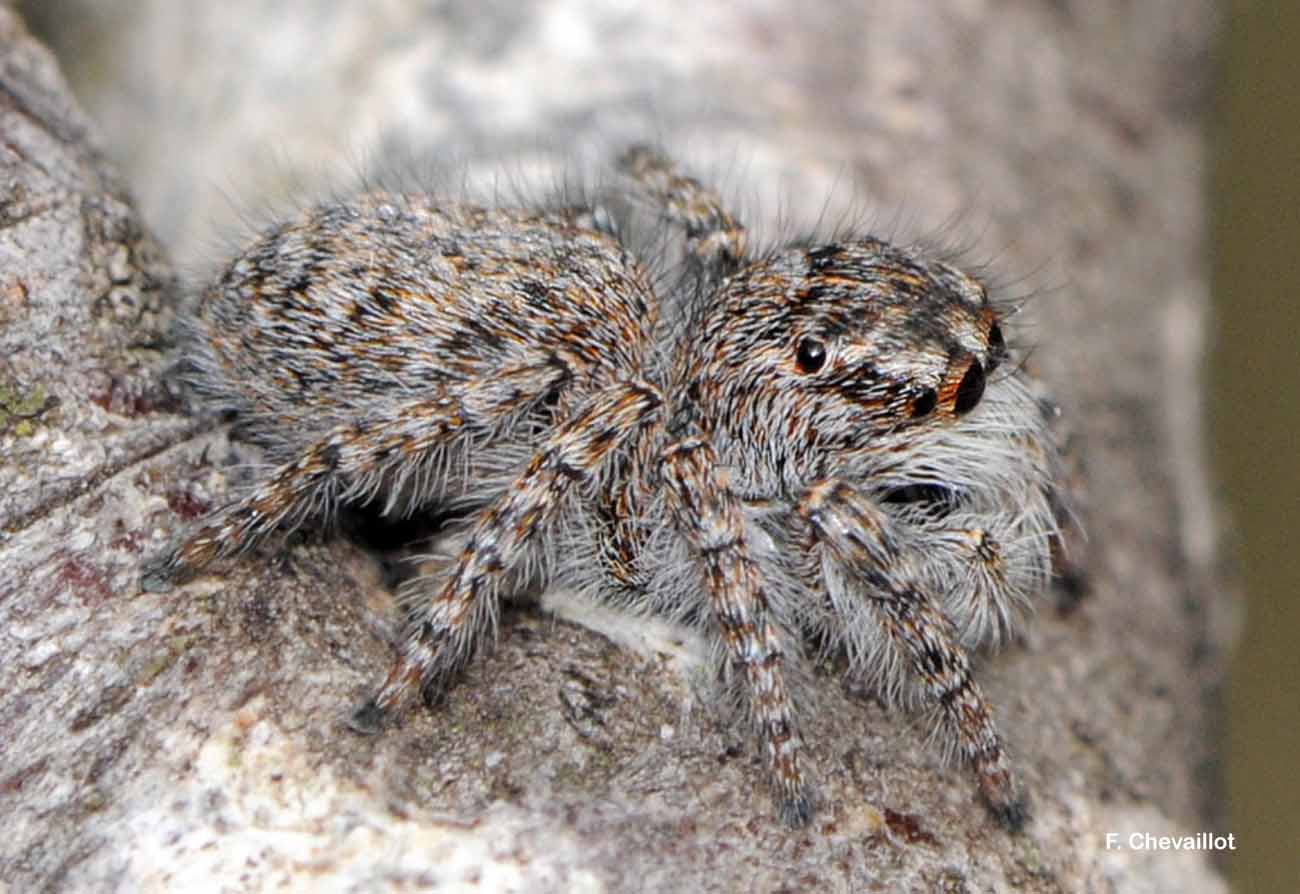
| Author : F. Chevaillot |
 |
To get the picture, please visit:
Fred CHEVAILLOT
Moulin de Castor
La Maynobe
12550 COUPIAC
06 51 19 18 32
09 88 28 31 26
www.insecte.org
email : fred.chevaillot@wanadoo.fr
Any reuse of one or more photographs on this site is subject to an authorization request from the author.
Link to the Code of Intellectual Property (Legifrance)

| Author : A. Fisher / INPN |
 |
To get the picture, please visit:
Alary Fisher
inpn@mnhn.fr
Despite the Creative Commons license, please inform the author of the use which will be made of his photo
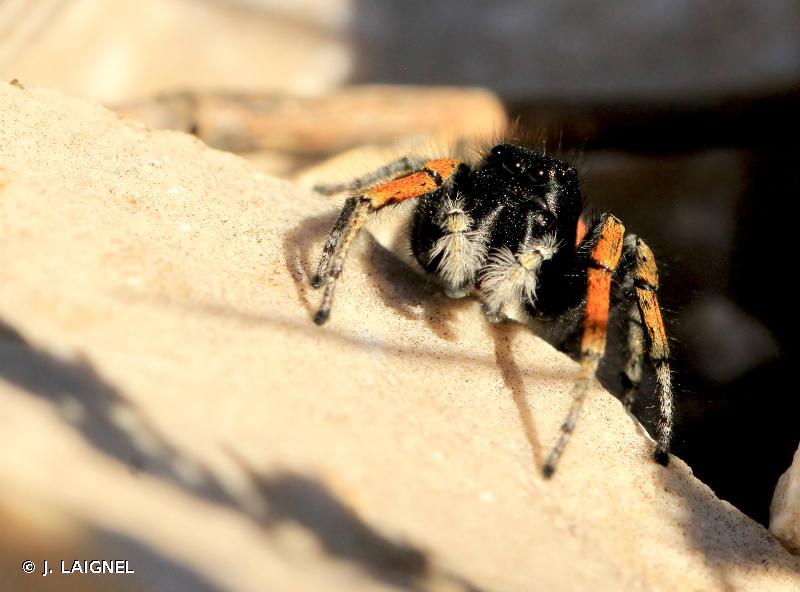
| Author : J. LAIGNEL |
 |
To get the picture, please visit:
Julien Laignel
Chargé de mission SNB - SPN/MNHN
4, avenue du Petit Château
91800 BRUNOY
Tel.: 06.10.68.23.36
Mail: julien.laignel@9online.fr
Despite the Creative Commons license, please inform the author of the use which will be made of his photo
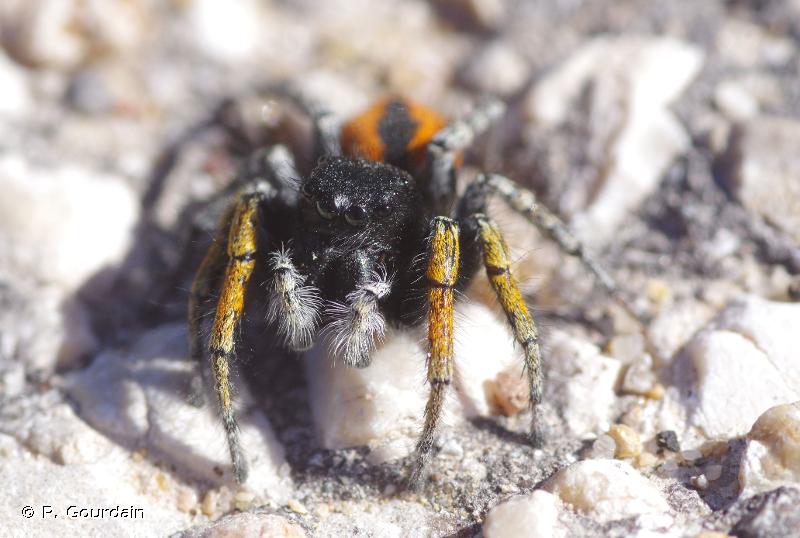
| Author : P. Gourdain |
 |
To get the picture, please visit:
Despite the Creative Commons license, please inform the author of the use which will be made of his photo
Distribution mondiale
Europe plutôt méridionale et centrale, Bassin méditerranéen
Caractères distinctifs, espèces
Taille - femelle : 7-12 mm, mâle : 7-10 mm.
Les yeux sont caractéristiques des araignées sauteuses, la taille est assez forte, y compris chez le mâle qui peut être parfois plus grand que la femelle. Le céphalothorax est brun, tacheté de clair chez la femelle, noir avec deux taches latérales blanches chez le mâle. L'abdomen est rouge chez le mâle et gris clair plus ou moins tacheté chez la femelle. Les deux sexes possèdent une bande médiane noire caractéristique. Le genre Philaeus, méditerranéen, n'est représenté en France que par une seule espèce. Spectacu-laire, l'espèce a été décrite sous plusieurs noms différents, suivant qu'il s'agit du mâle : Saltique doré, Saltique sanguinolent, ou de la femelle : Saltique de Sloane.
Milieux colonisés
On observe aisément le mâle dans les terrains secs en général chauds, parmi les pierres, sur les rochers, sur les murs des maisons. La femelle est beaucoup moins visible, excepté sur les rochers.
Chasse
L'espèce chasse le jour et se refugie hors de cette période dans une loge de soie ouverte aux deux extrémités, tissée sous une pierre ou dans une anfractuosité. Il capture différents types de proies, souvent des Diptères. Les proies sont repérées visuellement à 5-6 cm de distance. La taille des proies est en général plus faible que celle de l'araignée, mais il peut capturer des proies deux fois plus grosses que lui.
Développement, cycle
Les adultes sont présents de mai à juillet, les femelles de mai à septembre. Le cycle vital est annuel. La danse nuptiale a lieu à distance, les pattes antérieures levées. Les 25 à 35 œufs sont pondus dans la loge, ils sont regroupés dans un sac recouvert de soie. Les jeunes sortent dans la loge au bout de quelques jours puis la quittent ensuite et se dispersent. Il y a deux à trois pontes par saison.
A. Canard(Université de Rennes/Service du Patrimoine Naturel, MNHN),2014
Continental
Metropolitan France
Overseas
Marine
Metropolitan France
Overseas
The map presents a summary at the 10 x 10 km grid of the observation data for the species transmitted to the SINP. These data have been subjected to validation filters.
The map presents a reference distribution layer of the species at the scale of departments and marine sectors. The presence and absence data were established by expertise within a network of partners. This reference distribution is used in the validation process of the SINP data at the INPN level.
Corresponds to a report on the basis of at least one observation proved within a period of 10 years (20 years for little-known invertebrates) preceding the year and no presumption of extinction since obtaining the last data nor doubt on reproductive and implemented nature of this population. For migratory species, the presence indicated concerns areas of reproduction.
This status is based on one or more of the following criteria:
This point covers the absence, more difficult by nature to demonstrate than presence. This status is based on one or more of the following criteria:
This status must be assigned to a department in which the presence of the species is casual.
Particular case of absence due to a proven extinction less than a half century ago (older disappearances are treated as "no probable or definite").
In the state of knowledge, we can not comment on the presence or absence in the current department. This is the default status when not comprised in one of the previous categories or whenever there is doubt.
The map shows the global distribution of the species based on GBIF data (Global Biodiversity Information Facility).
